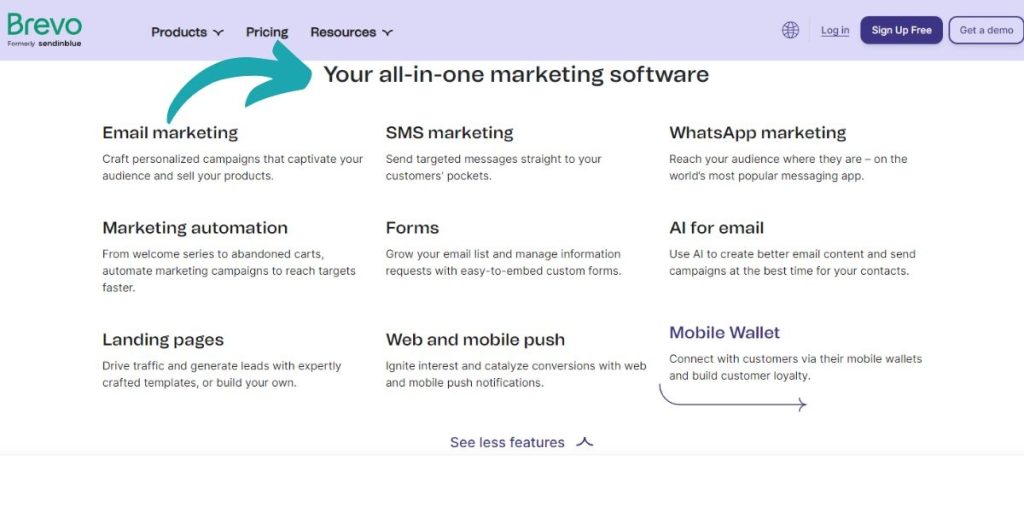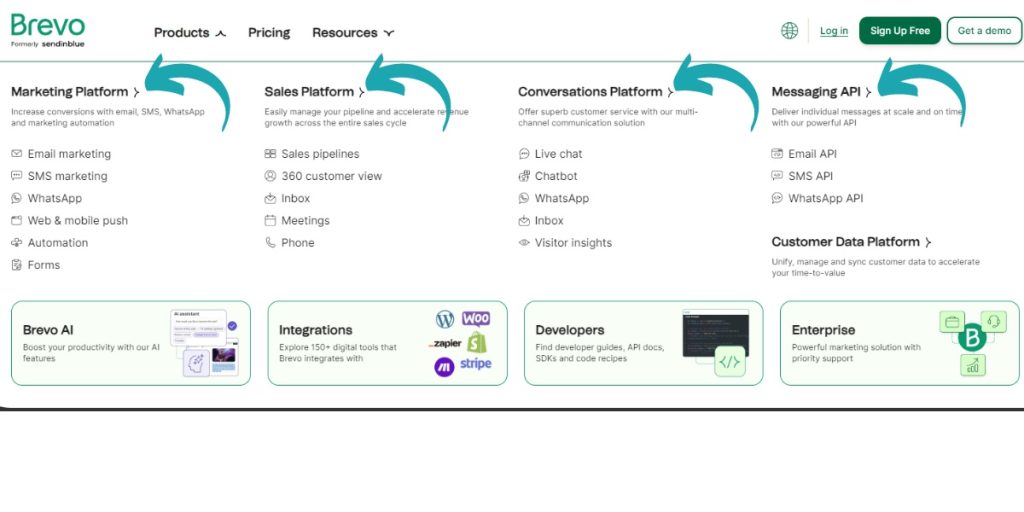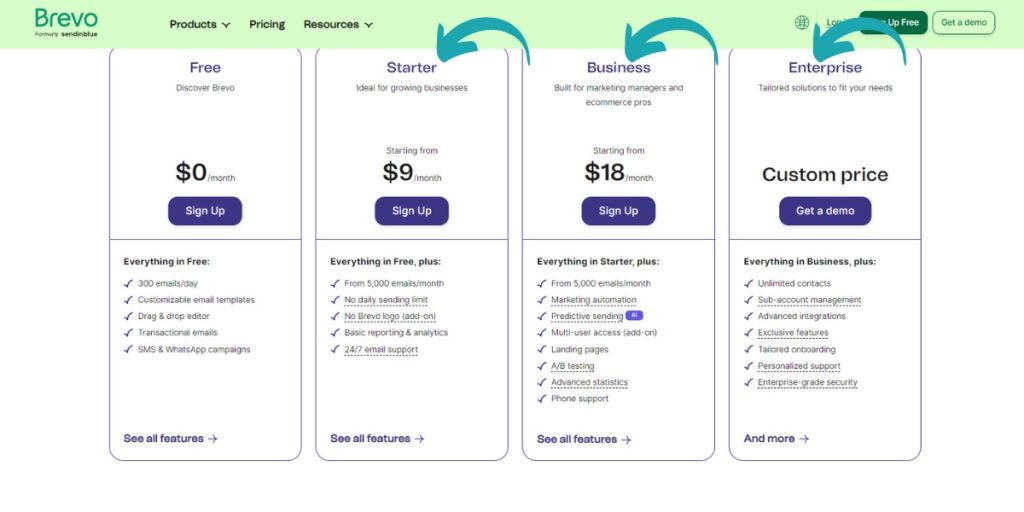In the ever-evolving landscape of digital marketing, Brevo (formerly Sendinblue) has made significant strides by aggressively integrating Customer Relationship Management (CRM) features into its platform. While this move aims to offer a comprehensive solution for businesses, it has sparked a debate among users, particularly those who are primarily focused on email marketing or are already satisfied with their existing CRM systems. This article delves into the implications of Brevo’s CRM-centric strategy, explores the challenges it poses, and provides practical strategies for users navigating these complexities. Additionally, we’ll introduce an innovative alternative, Prism Reach, that addresses these pain points, ensuring your email marketing efforts remain streamlined and effective.
Key Facts
- Brevo has integrated CRM features into its core offering, potentially complicating the user experience for email-focused marketers.
- Users report feeling pressured to adopt CRM functionalities they may not need, leading to considerations of alternative platforms.
- The aggressive push for CRM adoption has resulted in mixed reactions, with some users appreciating the all-in-one approach while others prefer more specialized tools.
- According to a survey by EmailToolTester, 37% of businesses cited “better email client compatibility” as a primary reason for switching from Mailchimp to other providers.
- Prism Reach offers a focused, AI-powered email marketing solution that enhances personalization without the complexity of integrated CRM systems.

Unraveling Brevo’s Aggressive CRM Features
Overcomplicating the User Experience
Brevo’s decision to heavily promote its CRM features alongside its email marketing tools represents a significant shift in the company’s strategy. This move aims to cater to businesses seeking an all-in-one solution, reducing the need for multiple platforms. However, this approach has not been universally welcomed by Brevo’s user base. Many users who signed up primarily for robust email marketing capabilities find themselves navigating the added complexity of CRM functionalities they did not anticipate or require.
Impact on Email Marketing Focus
For users whose primary goal is email marketing, the integration of CRM features can dilute the platform’s focus. Instead of enjoying a streamlined, email-centric experience, marketers are forced to contend with additional tools and settings that may not align with their immediate needs. This shift can lead to a steeper learning curve and potential inefficiencies, as users must allocate time and resources to manage features outside their core competencies.


User Pushback and Feedback
Despite the potential benefits of an integrated CRM system, many users have expressed frustration with Brevo’s aggressive promotion of these features. A survey conducted by EmailToolTester found that 42% of Brevo users primarily signed up for email marketing capabilities and felt overwhelmed by the constant push towards CRM adoption. This sentiment is echoed across various user forums and review platforms, highlighting a significant challenge in Brevo’s strategy: balancing the introduction of new features with user preferences and expectations.
Integration with Existing CRM Systems
For businesses already utilizing established CRM systems like Salesforce or HubSpot, Brevo’s CRM push can create unnecessary complexity. Integration challenges and data redundancy become significant concerns, as users must navigate the overlap between Brevo’s built-in CRM and their existing systems. This overlap can lead to workflow disruptions and inefficiencies, ultimately impacting the overall effectiveness of marketing campaigns.
Pricing Implications
The pricing structure associated with Brevo’s CRM features has also been a point of contention. While basic CRM functionalities are included in lower-tier plans, advanced features often require upgrades. This tiered approach to pricing can be seen as a form of upselling, where users are encouraged to pay more for features they may not need. For email-focused marketers, this can lead to a perception of diminished value, especially if they are not leveraging the CRM functionalities to their full potential.

Hidden Gems: Strategies to Navigate Brevo’s Aggressive CRM Features
While many email marketers struggle with Brevo’s integration of CRM features, integrating these lesser-known strategies can significantly enhance the effectiveness and ease of managing your email marketing efforts without the added complexity.
1. Leverage Brevo’s Segmentation Features Wisely
Brevo offers powerful segmentation tools that many users do not fully utilize. By taking advantage of advanced segmentation, you can create highly targeted campaigns without relying on the full suite of CRM features. Focus on segmenting your audience based on email engagement, purchase history, and other relevant criteria to streamline your email marketing efforts.
Practical Tips:
- Use behavioral data to create segments that reflect user interests and actions.
- Avoid over-segmentation, which can complicate campaign management.
- Integrate segmentation with your email automation workflows for personalized communication.
2. Utilize Automation Templates for Efficiency
Brevo provides pre-built automation templates that can save time and effort. Utilize these templates to set up common workflows, such as welcome emails or abandoned cart reminders, without needing to dive deep into CRM functionalities. Automation can enhance your email marketing efficiency, ensuring timely and consistent communication with your audience.
Practical Tips:
- Select templates that align with your marketing goals and customize them to fit your brand voice.
- Test automated workflows to ensure they trigger correctly and deliver the intended message.
- Monitor automation performance and make adjustments based on engagement metrics.
3. Sync Only Necessary Data
If you decide to integrate Brevo’s CRM features, be selective about the data you sync from your existing systems. Syncing only the necessary data reduces clutter and ensures that only relevant information is managed within Brevo, making it easier to navigate and utilize. This selective approach helps maintain focus on your core email marketing objectives without getting bogged down by irrelevant CRM data.
Practical Tips:
- Identify the key data points that are essential for your email marketing efforts.
- Exclude non-essential data to keep your Mailchimp lists clean and manageable.
- Regularly review and update your data syncing settings to align with evolving marketing needs.
4. Take Advantage of Third-Party Integrations
Explore third-party integrations that can enhance Brevo’s capabilities without fully committing to its CRM system. Tools like Zapier can bridge gaps between Brevo and your preferred CRM, allowing for smoother data flow and management. By leveraging third-party tools, you can maintain your existing CRM workflows while benefiting from Brevo’s email marketing features.
Practical Tips:
- Identify integration tools that support both Brevo and your current CRM systems.
- Set up automated workflows using third-party tools to ensure data consistency across platforms.
- Monitor integrations regularly to ensure they are functioning correctly and adjust settings as needed.
5. Explore Alternative Solutions if Necessary
If Brevo’s CRM features become too cumbersome or do not meet your needs, consider exploring alternative solutions that specialize in email marketing or CRM functionalities separately. Platforms like Prism Reach offer focused, AI-powered email marketing tools that enhance personalization and engagement without the added complexity of integrated CRM systems.
Practical Tips:
- Evaluate your email marketing and CRM needs to determine if an all-in-one solution is necessary.
- Research alternative platforms that offer the features you need without the added CRM complexity.
- Consider using specialized tools in tandem to achieve a more tailored and effective marketing strategy.
Benefits of Prism Reach
Integrating Prism Reach into your email marketing strategy offers several advantages, especially for users navigating the complexities of Brevo’s aggressive CRM push:
- Increased Engagement: Publishers report up to 40% higher engagement rates due to the personalized nature of the content.
- Higher Revenue: Tailored advertising and efficient content targeting lead to higher monetization rates for published newsletters.
- Improved Productivity: Automation and AI-driven insights significantly reduce the time required to create and manage campaigns.

Prism Reach: Enhancing Your Email Marketing Without Unnecessary CRM Features
While overcoming Brevo’s integration challenges is essential, leveraging advanced tools can take your campaigns to the next level. Prism Reach, an innovative AI-powered SaaS solution, offers a game-changing approach to email personalization and content optimization, seamlessly integrating with your existing systems without the added complexity of built-in CRM features.
AI-Powered Personalization
Prism Reach leverages cutting-edge AI technology to deliver hyper-personalized email campaigns. This focus on advanced personalization allows marketers to achieve up to 40% higher engagement rates without the need for a full-fledged CRM system. By using sophisticated algorithms to analyze subscriber behavior and preferences, Prism Reach ensures that each newsletter is tailored to individual recipients, maximizing relevance and impact.
Seamless Integration with Existing Systems
For businesses already invested in CRM solutions, Prism Reach offers seamless integration capabilities. This approach allows marketers to maintain their existing CRM workflows while benefiting from Prism Reach’s advanced email marketing features. The platform’s quick setup process and one-click uploads make it easy for users to migrate from other systems without losing valuable data or disrupting established processes.
Focus on Core Email Marketing Functionality
Prism Reach’s dedication to email marketing excellence means that users aren’t burdened with unnecessary features or pressured to adopt additional functionalities. Instead, the platform concentrates on delivering superior email campaign performance through features like AI-enhanced sign-up forms, dynamic content selection, and optimal sending time predictions. This focused approach ensures that marketers have access to the most advanced email marketing tools without the distraction of peripheral features.
Prism Reach Features Addressing Integration Challenges
Prism Reach not only enhances personalization and content optimization but also offers features that help mitigate common integration issues:
- Responsive Design Tools: Ensure your emails are optimized for both light and dark modes, enhancing readability across all devices.
- Inline CSS Styling: Automatically applies inline styles to improve compatibility with various email clients, including Outlook.
- Automated Testing: Integrates with email testing tools to preview and adjust email designs for optimal compatibility across platforms.
Upgrade Your Email Marketing with AI Personalization!
Conclusion
Brevo’s aggressive push of its CRM features represents a significant shift in the email marketing landscape, one that has been met with mixed reactions from its user base. While the integration of CRM and email marketing functionalities offers potential benefits for some businesses, it has also created challenges for users who prefer specialized tools or are satisfied with their existing CRM solutions.
The debate surrounding Brevo’s approach highlights the importance of balancing innovation with user needs and preferences in the rapidly evolving digital marketing sector. As alternatives like Prism Reach demonstrate, there is a growing demand for focused, AI-driven email marketing solutions that prioritize personalization and engagement without the added complexity of integrated CRM systems.
By leveraging Prism Reach’s advanced features, marketers can ensure their emails remain effective and personalized without the unnecessary complications of Brevo’s CRM push. Whether you’re looking to enhance engagement, boost revenue, or improve productivity, Prism Reach offers a streamlined solution tailored to your email marketing needs.
As the digital landscape continues to evolve, embracing innovative solutions like Prism Reach may be the key to staying ahead in the competitive world of email marketing. Say goodbye to integration frustrations and hello to seamless, impactful marketing campaigns that resonate with your audience and drive business growth.